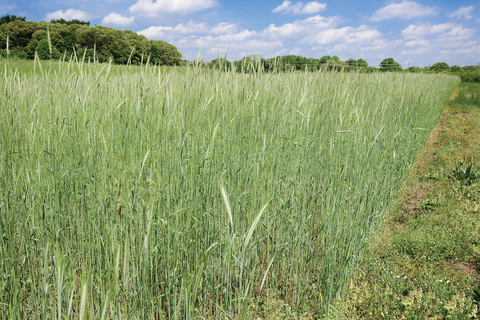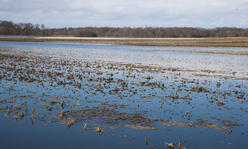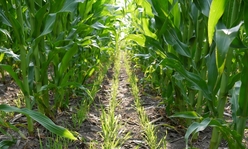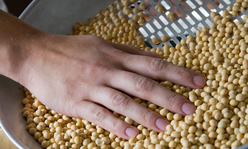You probably didn’t witness the usual endless spectacle of lush green soybean plants and golden corn if you drove through rural Minnesota this year. “It was a ridiculous year,” says Jared Goplen, University of Minnesota Extension crops educator. “The crops look terrible.”
There’s just no sugarcoating it. The skies of 2019 delivered a deluge during prime planting weeks. Hail pounded young seedlings in some areas. One news story showed a soybean farmer canoeing through his fields.
Because farmers’ decisions involved complicated global economics, late planting or no planting, and federal crop insurance programs, Extension faculty and educators had their work cut out for them.
“There were no easy answers,” says Seth Naeve, Extension soybean specialist, “but Extension shared information through the ag radio stations and websites farmers depend on, through Extension’s own Crop eNews and podcasts, and in person.”
Four hundred farmers showed up for one in-person event to learn everything they could before deciding what to do when weather prevented them from planting.
Protecting the land, feeding the animals
There was one silver lining. Many more farmers this year than in other years planted cover crops—crops that are often planted between growing seasons for the benefits they provide to the soil and the environment.
“The situation presented an opportunity for people to try them out,” says Liz Stahl, Extension crops educator based in Worthington. “Of course they would much rather have had a cash crop in the field, but getting living roots in the ground conserves the soil, helps control weeds, and lets farmers look ahead to next year.”
Many of the cover crops also serve as food for livestock, which has been in short supply. A rule change this year moved up the date when cover crops may be hayed or grazed, opening a window of opportunity. Farmers will be able to collect payments this year on the crops that weather prevented them from planting, while still harvesting food for livestock.
“Cover crops this year put some of the negative energy into something positive and added economic value to the system at a time when it’s sorely needed,” says Goplen.
Selecting cover crops
Goplen and Stahl shared more decision-making factors in Extension’s Crop eNews, but some cover crop options for forage include:
- Warm-season cereals like sorghum, sudangrass and millets, which do well in hot conditions.
- Cool-season cereals like oats, wheat, barley and rye, which can be chopped or baled for dry hay.
- Legumes, like peas, which mix well with small grains to add protein for silage.
- Brassicas, like turnips and radish, which don’t work for silage, but serve as grazing options and forage for animals.





